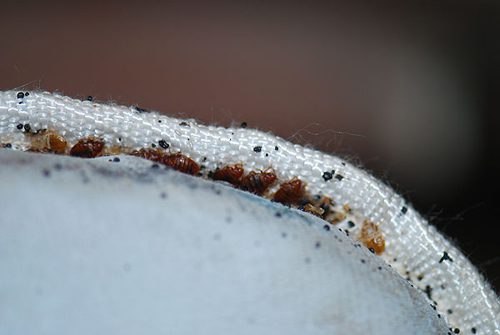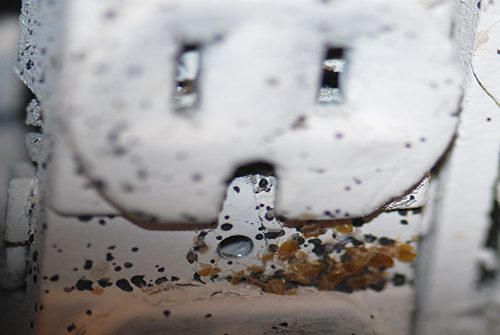Introduction
Welcome to your one-stop guide for understanding the world of bed bugs – those small, irritating invaders that can transform your peaceful home into a nightmarish scenario. If you’ve discovered a bed bug infestation in one room, you’re likely asking the worrying question: If One Room Has Bed Bugs Do They All?
In this inclusive guide, we’ll explore the maze of bed bug behavior, their survival tactics, and crucially, how they spread. It’s an essential read for homeowners and renters alike, because understanding your enemy is the first step to defeating them. And when it comes to bed bugs, a little knowledge can go a long way in preventing a minor problem from turning into a major infestation.
So, whether you’re battling an active infestation or seeking to fortify your defenses, you’re in the right place. Dive in, and let’s demystify the world of bed bugs together.
A Close Look at Bed Bugs
Before we jump into the spreading mechanisms of these tiny hitchhikers, let’s first unravel who they really are. Bed bugs, scientifically known as Cimex lectularius, are small, mostly nocturnal insects that feed predominantly on human blood. They’re notorious for their elusive behavior and their ability to survive under challenging conditions.

In terms of appearance, adult bed bugs are reddish-brown, with flat, oval bodies about the size of an apple seed. They undergo a fascinating yet alarming life cycle, progressing from tiny, nearly transparent eggs to nymph stages, and ultimately, to mature adults. It’s worth noting that throughout these stages, they’re always on the hunt for a blood meal, making no stage ‘safe’ from an infestation perspective.
A grasp of their life cycle and behavior forms the bedrock for understanding how a bed bug infestation can potentially spread throughout your home. This knowledge equips you with the tools to understand their tactics, making your home a fortress against these unwelcome invaders.
Bed Bug Mobility and Expansion
Now that we’re familiar with these unwelcome guests, let’s uncover how they maneuver within your home. Bed bugs are adept travelers, making their way from room to room with surprising speed and stealth. They typically move around by ‘hitchhiking’ on clothes, luggage, furniture, or even via wall cavities and electrical conduits, effectively infiltrating every nook and cranny.
Moreover, these intruders reproduce rapidly, with females laying hundreds of eggs during their lifetime. Their breeding rate often intensifies under favorable conditions such as ample food supply (human blood, in this case) and warm temperatures. They will be found commonly around their food source.
Therefore, an infestation in one room can swiftly spiral into a whole-house nightmare if left unchecked. It’s the rapid mobility and spread of bed bugs that underlines the importance of early detection and swift, effective treatment. Coming up, we’ll delve into the signs and consequences of a single room infestation, arming you with the necessary knowledge to stop these pests in their tracks. Stay tuned as we continue our journey into the hidden world of bed bugs.
The Reality of a Single Room Infestation
The discovery of a bed bug infestation in one room can set alarm bells ringing. And rightly so. This isn’t a situation to ignore or hope it resolves on its own. A single-room infestation can be the tip of the iceberg, a sign of a larger problem lurking beneath the surface. It could lead to a full-blown infestation.
Bed bugs, once settled in, quickly make themselves at home. They breed at a rapid pace and can easily spread to other areas in search of a meal. Ignoring these pests could give them the time they need to transform your home into their breeding ground.
Even more concerning is the fact that these mostly nocturnal creatures don’t just restrict themselves to your beds or bedrooms. They’re adventurous and resilient, capable of living in upholstered furniture, cracks in the wall, or even your electronic devices.
Therefore, it’s safe to conclude that a bed bug infestation in one room does raise the red flag for the rest of your home. Recognizing this reality is crucial for swift action and containment. In our following sections, we’ll shed light on the signs of a larger infestation and arm you with the tools to wage an effective war against these pesky invaders. Continue reading to stay one step ahead in this battle against bed bugs.
Detecting a Wider Infestation
While the idea of a more extensive bed bug infestation can seem intimidating, knowing the telltale signs can equip you with the power to halt their invasion in its tracks. So, what should you be on the lookout for?
One of the most evident signs of bed bugs is small, itchy, red bites on your skin, typically in a line or zigzag pattern. These stealthy critters tend to feast while you sleep, leaving a trail of bites as evidence. However, be aware that not everyone reacts to bed bug bites, making some of the other signs equally important.
Other indicators of an infestation include tiny blood stains or dark spots on your sheets, which are the result of bed bugs feeding or excreting. Moreover, a distinctive musty odor, like a wet towel, can often be detected in areas heavily infested by bed bugs.
Furthermore, pay attention to your surroundings. Bed bugs shed their skins as they grow, leaving behind clear, molted exoskeletons. Finding these, especially in unusual locations like your living room or kitchen, may signify that the infestation has spread beyond the initial room.
Detecting a wider infestation early is your best defense against a full-blown bed bug invasion. In the next section, we will explore strategies to contain and prevent the spread of these pests, arming you with the knowledge to protect your sanctuary effectively. Stay with us as we continue our guide to outsmarting bed bugs.
Strategies to Control and Prevent Infestations
Armed with the knowledge of bed bug behavior and signs of their infestation, you are now ready to take on these intrusive pests. The first step is to contain the infestation in the detected room. How can this be done?
Begin by isolating the affected room as much as possible to prevent bugs from spreading to other areas. This might involve sealing off the room and treating it separately. Consider using bed bug-proof encasements for your mattresses and box springs – these can trap bugs and eventually lead to their death by starvation. Even if you eradicate bed bugs in a particular room, a week later they can be back. The entire house or property must be cleared of bed bugs before you can rest easy. I know, it sounds like a nightmare. You may even have to leave your property during fumigations.
Keeping your home clean can also be a helpful deterrent. While bed bugs are not attracted to dirt, cluttered environments provide more hiding spots for them. Regular vacuuming, especially around your bed area, can physically remove bugs from your surroundings.
If the infestation is advanced or you’re struggling to contain it, it may be time to call in the professionals. Pest control companies have specialized treatments, including heat treatments and insecticide sprays, that can effectively handle larger infestations.
Prevention, as always, is better than cure. So, regular inspection of your rooms, especially after traveling or receiving second-hand furniture, can help detect an infestation in its early stages and keep it from spreading. Early detection and careful cleaning are key to prevent this. If you live in an apartment, condo, or house with multiple roommates, notify them immediately. You would expect the same from them.
Recovering from a Bed Bug Invasion
Having battled and won against a bed bug infestation, it’s crucial to restore your home to its original, bug-free state. This involves effective cleaning procedures and implementing preventive measures to ward off any future invasions.
Firstly, launder your bedding, curtains, clothes, and other fabrics in hot water and dry them on the highest dryer setting. Bed bugs cannot survive in extreme heat, making this a simple yet effective method to eliminate any residual bugs. Items that can’t be washed, such as shoes or stuffed animals, can be put in the dryer directly. Place all toys, books, and other miscellaneous items in plastic bags.
Secondly, scrub infested surfaces with a stiff brush to dislodge eggs and vacuum your entire home thoroughly. Pay special attention to your mattress and the surrounding areas. Once done, immediately place the vacuum cleaner bag in a sealed plastic bag and discard it in an outdoor trash bin. Do not use a bagless vacuum.

Finally, consider repairing cracks in plaster and gluing down peeling wallpaper to eliminate potential hiding spots for bed bugs. Check the seams of books, electronics, and light switch plates. Remember, bed bugs are persistent. They can lie dormant for months, only to resurface when you’ve let your guard down. Consistent prevention and regular checks are crucial to ensure they don’t return. Diatomaceous Earth is an excellent product to help stop their movement. It also acts as a cost-effective prevention tool.
Conclusion
Throughout this extensive guide, we’ve journeyed into the hidden world of bed bugs, understanding their lifecycle, behavior, and how they can quickly turn a single room infestation into a home-wide takeover. Their stealthy tactics and rapid reproduction rate make them a formidable foe, but by identifying the early signs of infestation, we can halt their progression in its tracks.
We’ve explored strategies to contain and eradicate bed bugs, focusing on immediate isolation, thorough cleaning, and preventive measures like regular inspections. Moreover, we’ve underlined the importance of professional help in managing advanced infestations.
Lastly, we discussed recovery from a bed bug invasion, emphasizing diligent cleaning and prevention tactics to stop a potential reinfestation. Remember, the fight against bed bugs is continuous – they are survivors, and your vigilance is the key to keeping them at bay.
Knowledge is your greatest weapon in this battle. With the insights provided in this guide, you are now equipped to protect your home and loved ones from the threat of bed bugs. Remember, early detection and immediate action are key. Here’s to maintaining a comfortable, bed bug-free home!




